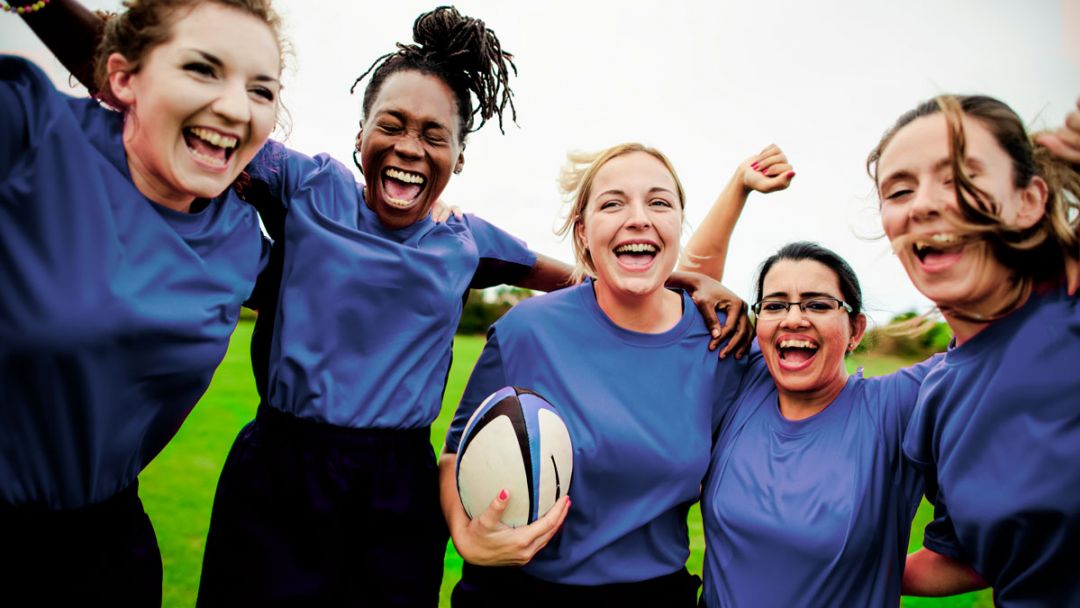Making Sport a Force for Good in Schools

The historic significance of sport is still visible in many schools. It is immediately evident in the honours boards, international jerseys, colours systems and Sports Day trophies that often go back more than 100 years. Attending that are the special mechanisms which recognise the top performers. In some schools the caps, blazers and ties are still coveted currency; in others they have been consigned to the archives, but live on in the team photos which often still line the walls. There is a clear, but unintended, consequence: an implication that the sports prowess of a small number of top performers is highly valued within the school community.
This meritocracy has led to the special treatment of some pupils, on the grounds of sporting ability. This can sit uncomfortably in an era of inclusivity, and many schools have deliberately diluted the status of the student athlete.
Sadly, the prominence of the games players has not always been a positive influence in school culture. Marquee performers enjoyed elevated status since the foundation of the early public schools, through the nineteenth century. This was attended by privilege and adulation. At its worst, this created a toxic culture, with a favoured few strutting round the school and conducting themselves like rules didn’t apply to them. Often behind with work, sometimes through contempt for education and sometimes as a result of regular absence at matches and contests. Sometimes boorish, badly behaved in the classroom, contemptuous of the less able and bullying younger pupils, it is unsurprising that most schools grew an anti-games lobby amongst the staff. A rift between the games facing teachers, who take pride in the outcomes of school matches, and their indifferent colleagues, is not unusual. Co-education brought a civilising and equalising influence, though equity of opportunity and recognition were not always as quick to arrive. Fewer were the female athletes in the striped blazers, and fewer still those who were a negative influence in the school.
It doesn’t have to be like this.
Athletic prowess will always command the attention, and admiration, of the young. Denying this is to misunderstand the inherent appeal of sport. What is not inevitable, however, is the impact this can have on the character of a school. Whether the status of the celebrated athletes is a negative influence, or projects sport as a force for good, is in the gift of every school. It is massively determined by the approach of the sports staff – the coaches and teachers who work with the marquee performers, and shape their behaviours and values. The nature of parental support is also relevant. This varies significantly between organisations. However, it is not a product of school type, location, facilities or sporting success. It is a direct reflection of the culture which schools build – or one that emerges uncontrolled where this is neglected.
In the best environments, the leading athletes exploit their status in a positive way. They are role models of dedication, commitment and sportsmanship. Their interactions with younger pupils are inspirational, and they are genuinely engaged and interested in the wider reputation of the school. And not simply in their narrow, personal triumphs. They recognise a bigger responsibility, encourage participation, are quick to praise others’ efforts - and also to challenge their failures.
It is naïve to deny the influence of the leading sports men and women in a school community. Making this a force for good is a modern challenge. The inflection points, where things are most likely to go wrong, are the biggest opportunities for influence. Commitment to the most distant away games against the strongest opponents is the best opportunity to promote commitment and teamship. When emotions run high in matches against local rivals, there are the best opportunities to promote sportsmanship, dignity and self-control.
Games were introduced into schools to develop character. Somewhere along the line, this was replaced by the drive for higher performance and filling the trophy cabinet. Those, more recent, ambitions, have sometimes overtaken the attitudes and behaviours of the participants. Excesses have been tolerated and overlooked: regarded as inevitable in the pursuit of high performance.
The shop window of professional sport is not always a positive influence. The emergence of self-interestedness, cheating and routine abuse of officials has normalised an alternative, toxic culture around sport. Unless challenged, this will continue to percolate into schools.
Why is the sporting culture positive in some schools, but not others? Why does every competitive circuit have one school that no one enjoys playing, because it is usually an unpleasant experience? This is not inevitable. Every school chooses the values it promotes, and the standards it accepts. This applies to the classrooms, the corridors, the dining room - and the sports fields. Without dynamic leadership, a strong and visible culture, senior pupils as cultural architects and a willingness amongst staff to challenge shortcomings, the slide to mediocrity is probably inevitable. This finds expression in unreliable players, coach and parent touchline behaviour, disrespect for officials and adversarial atmosphere between teams. It makes sport a toxic influence in the school community.
It doesn’t have to be like this: it’s a choice for every school.
This article first appeared in ‘School Sport Magazine’, September 2024